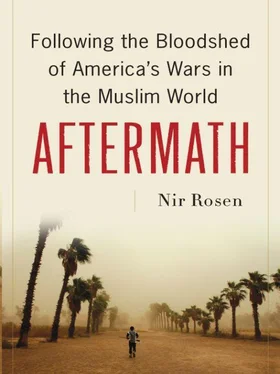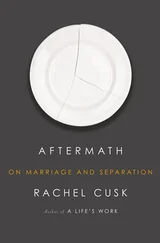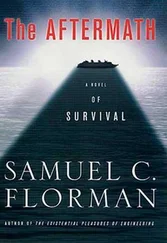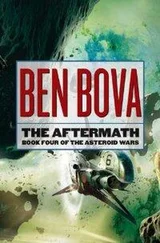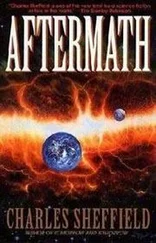“There were some Sunnis who lived there, but were mostly women without husbands and lived pretty low-key. My southern border was lined with bullet-riddled and burned houses that distinguished the line between Shiite Hurriya and the Sunni district south of Hurriya.”
The major told me about Operation Seventh Veil, which was aimed at targeting the Shiite militias, no matter the political risk. Dagger Brigade initiated an operation to investigate, track, and detain “radical or criminal ISF leadership to disrupt this longstanding government sanctuary.” Many were confronted with evidence of their criminal links and warned to behave. A major coup resulting from this operation was the arrest of Ghazaliya’s police chief as well as officers from the Iraqi army.
By June 2007 Golden JAM had killed or captured rogue Mahdi Army elements, and the major’s battalion had disrupted the militia’s lines of communications, resources, and leadership, denying them sanctuary and killing “high-value individuals.”
In Dora, the main headquarters for the Sadrists and the Mahdi Army was the Kadhimayn Mosque in Abu Dshir. Its loudspeakers were within listening reach of Falcon FOB, where the 2-2 SCR was based. According to that unit’s senior intelligence officer, Captain Dehart, “We are actively targeting rogue elements of Shiite extremists that have not complied with Muqtada’s cease-fire and the remnants of Al Qaeda.” When Dehart first came into this area, it was Al Qaeda’s top stronghold in Iraq; but after successful clearing operations the leadership fled and the ones left were low-level thugs, young Sunni males with nothing better to do than to call themselves Al Qaeda, string together fellow thugs from the neighborhood, and try their hand at extortion and murder.
On a map Dehart showed me Saha and Mahala 828, or Kifaat, in northern Saha. He pointed to southern Saha, the majority-Shiite area ruled by Abu Jaafar, General Karim’s ally. It had large government-built apartment complexes. The north had villas he said had belonged to mostly Sunni government officials. “In the last few months Shiite militias moved up. Now the north is largely abandoned; it has a 10 percent occupancy rate. That’s where the fault line was. We called it ‘the arena.’ Sunnis from Mahala 830, or Hadhir, would come across and Shiites would come up and fire mortars into Sunni Mahalas 822 and 824 and randomly kill people. We have been able to cut that a lot. I can’t even say we—the surge, as Iraqi institutions have started to stand up and get more efficient. And it comes down to the people too, tired of the violence. We’ve had only one indirect fire incident in the last two weeks, directed at the FOB. It’s been a month and a half since we’ve had anything shot neighborhood to neighborhood. When we first got here it was several times a week. We specifically targeted that, and captured or killed mortar teams on both sides.”
First Lieut. Adam Sperry was Dehart’s tactical intelligence officer. Walking back from the chow hall to the tactical operations center one night, we heard celebratory gunfire and a speech blasting from the Kadhimayn Mosque’s loudspeakers, which he called “the propaganda phone.” Sperry said it was for the death of the Ninth Imam.
A week before my visit three Shiite NAC members who led three mahalas in Abu Dshir had been kidnapped just as ISV recruiting was set to begin in the area. They were taken to the Kadhimayn Mosque and released within twenty-four hours. The mosque’s previous imam, Sheikh Majid, had been arrested a year earlier but was later released. I asked why he was arrested. “Because he was a scumbag,” Sperry said. “The mosque was raided eight months ago. Weapons and a torture chamber were found. We should have raided that mosque a month ago.”
Sperry described Ziyad al-Shamari as the bane of his existence. “He’s the rogue special groups commander of Abu Dshir, responsible for EFPs [explosively formed penetrators] that have killed lots of our soldiers. This guy is not, nor was he ever, a Sadrist. He is funded entirely by Iran.” Sperry explained that Shiite militias did not attack the Americans in Abu Dshir, because it was their command-and-control location. “They don’t want to fight there or draw attention to themselves,” he said. Instead, they placed EFPs in other parts of Dora.
“Abu Dshir is stable,” Sperry said. “We don’t want to disturb that by breaking down doors. The guys we target in Abu Dshir are transiting there.” (The night before 2-2 SCR had gone on a raid to pick up two Mahdi Army suspects. When they showed up, one man drank a few gulps of motor oil and the other swallowed three pills of Viagra and passed out.) Thanks to the cease-fire and reconciliation, Sperry was having a hard time doing his job. “It’s impossible to determine who is good or who is bad,” he said, explaining that the only men the 2-2 SCR targeted were those who attacked the Americans after the cease-fire. “We can’t target anyone based on any evidence before that date.”
In December 2007, on my first Friday with the 2-2 SCR, an imam called Sayyid Abbas spoke at the Kadhimayn Mosque. He condemned killings and expulsions of people. “We are all brothers,” he said, and explained that Muqtada had imposed a cease-fire on his men “to correct all the mistakes and remove the bad members who joined the Mahdi Army without knowledge or religion. “They are just killers and thieves,” he said, “so if you know of somebody from the Mahdi Army trying to do something bad in the name of the Mahdi Army, please tell the mosque. We will take care of him by reporting his name to Kufa, and we will let the government know.” The government would arrest the renegade men, he said, granting the Iraqi Security Forces the Mahdi Army’s approval. The American forces were infidel forces, he said; they were trying to provoke a civil war, and Iraqis had to fight that. “We can’t kill our own brothers and our own people just because they are Sunni and Shiite,” he said. Not long after that, the Americans and Iraqi National Police raided the mosque again and found IEDs, mortars, and rockets.
Mahdi Army leaders were livid about the attempts to recruit Shiites for the Awakening and used the mosque to conduct investigations. They posted a “final warning” on the walls addressed to “the good people of Abu Dshir” and in “honor of the blood of our noble martyrs,” asking people to protect the souls of their sons and not join “the conspiracy known as the Awakening.” Abu Dshir’s main street, known as Rashid al-Tijari (the Americans called it Market Street), was lined with signs on light poles that bore pictures of Muqtada, his father, and various Mahdi Army “martyrs.” A slogan said that not all men were real men, which implied that these really were. A faded poster on one light pole said, “Bush and Saddam, two faces on same coin” in English. Graffiti on the walls warned takfiris that the Mahdi Army would declare them infidels deserving of death.
Sunni militias from the nearby Arab Jubur area had fired mortars at the Shiites of Abu Dshir. Walking through the neighborhood I found a man called Hisham working on his house. He had lost two brothers to the violence. Mortars from Arab Jubur had also landed on his neighbor’s house. “If it wasn’t for the police and the Americans, Al Qaeda would have destroyed us,” he said. “We are poor people, we just go to work and come back. We had no problems with our Sunni neighbors—it was all Al Qaeda.” People expelled from Arab Jubur and the Furat district had settled in the area. Muqtada’s local office and the Kadhimayn Mosque were providing assistance to them, including homes (emptied of Sunnis) and a stipend. Locals complained that the Mahdi Army freeze had hurt them. The militia had guarded the neighborhood and provided propane and kerosene, which they had trouble getting now. I asked who was protecting the area. “Its people,” I was told. “People sit in front of their homes.”
Читать дальше
